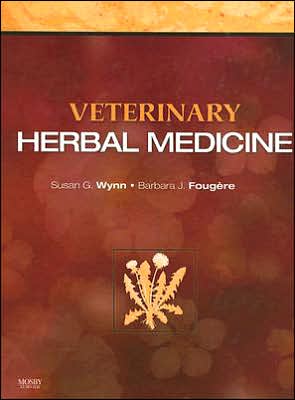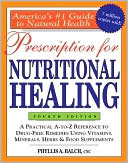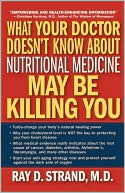Veterinary Herbal Medicine
This full-color reference offers practical, evidence-based guidance on using more than 120 medicinal plants, including how to formulate herbal remedies to treat common disease conditions. A body-systems based review explores herbal medicine in context, offering information on toxicology, drug interactions, quality control, and other key topics.\ • More than 120 herbal monographs provide quick access to information on the historical use of the herb in humans and animals, supporting studies,...
Search in google:
This full-color reference offers practical, evidence-based guidance on using more than 120 medicinal plants, including how to formulate herbal remedies to treat common disease conditions. A body-systems based review explores herbal medicine in context, offering information on toxicology, drug interactions, quality control, and other key topics.More than 120 herbal monographs provide quick access to information on the historical use of the herb in humans and animals, supporting studies, and dosing information.Includes special dosing, pharmacokinetics, and regulatory considerations when using herbs for horses and farm animals.Expanded pharmacology and toxicology chapters provide thorough information on the chemical basis of herbal medicine.Explores the evolutionary relationship between plants and mammals, which is the basis for understanding the unique physiologic effects of herbs.Includes a body systems review of herbal remedies for common disease conditions in both large and small animals.Discusses special considerations for the scientific research of herbs, including complex and individualized interventions that may require special design and nontraditional outcome goals. Doody Review Services Reviewer:Karen L Campbell, DVM, MS, DACVIM, DACVD(University of Illinois College of Veterinary Medicine)Description:This book provides veterinarians with the information needed to respond to clients' questions or concerns regarding the medical use of herbs. Purpose:The authors' goals are to contribute to the re-emergence of the art of veterinary herbal medicine. As they note, "people want herbal medicine." Because of this, it is worthwhile for veterinarians to be familiar with the concepts, rationale, and controversies surrounding the use of herbs in animals. Audience:This book is written for practitioners, but it could also be useful for students. It includes information which is generally applicable for all species on the use of herbs, with one chapter dedicated to the use of herbs in horses and another for use in dairy cattle. Features:After an introduction to the use of herbs in animals, five chapters provide historical information on the relationship between plants and animals and the medical use of herbs in various cultures. The second section of the book includes three chapters on controversies surrounding the use of herbal medicine. The third and longest section of the book includes nine chapters focused on plants and the industries associated with herbal medicine. Of particular interest are the chapters on the interactions between herbs and drugs and the need to be concerned with plant conservation. The fourth section includes a systems-based approach to herbal medicine and chapters on the use of herbs in horses and dairy cows. Appendixes include a list of providers, herbal terminology, and other useful information and tips on the administration of herbs to animals. It is somewhat surprising to see individual chapters devoted to the use of herbs in horses and in dairy cows, but no chapters on the use of herbs in dogs, cats, birds, or other small animals.Assessment:The primary competition for this book would be other books by the senior author, including Emerging Therapies: Using Herbs and Nutraceutical Supplements for Small Animals (AAHA Press, 1999) and Manual of Natural Veterinary Medicine: Science and Tradition (Mosby, 2002). These are softcover books which are less expensive, but are also less complete.
Introduction: Why Use Herbs? 1Historical Relationship Between Plants and Animals 5Zoopharmacognosy 7Ethnoveterinary Medicine: Potential Solutions for Large-Scale Problems 17The Roots of Veterinary Botanical Medicine 33Overview of Traditional Chinese Medicine: The Cooking Pot Analogy 51Ayurvedic Veterinary Medicine: Principles and Practices 59Herbal Medicine Controversies 85Evaluating, Designing, and Accessing Herbal Medicine Research 87Regulation and Quality Control 99A Skeptical View of Herbal Medicine 121The Plants 137Medical Botany 139Plant Chemistry in Veterinary Medicine: Medicinal Constituents and Their Mechanisms of Action 159Herbal Medicine: Potential for Intoxication and Interactions With Conventional Drugs 183Herbal Energetics: A Key to Efficacy in Herbal Medicine 209Herb Manufacture, Pharmacy, and Dosing 221Designing the Medicinal Herb Garden 237Commercial Production of Organic Herbs for Veterinary Medicine 249Conserving Medicinal Plant Biodiversity 257Safe Substitutes for Endangered Herbs: Plant Conservation and Loss of OurMedicines 265Veterinary Clinical Uses of Medicinal Plants 273Approaches in Veterinary Herbal Medicine Prescribing 275Veterinary Herbal Medicine: A Systems-Based Approach 291Herbal Medicine in Equine Practice 411Phytotherapy for Dairy Cows 441Clinical Practice: Getting Started 453Materia Medica 459AppendicesWeights and Measures Conversions 673Suppliers 675Training in Herbal Medicine 679Herbal Terminology 681Client Handout: Hints on Administering Herbs to Animals 683Index 685
\ Reviewer: Karen L Campbell, DVM, MS, DACVIM, DACVD(University of Illinois College of Veterinary Medicine)\ Description: This book provides veterinarians with the information needed to respond to clients' questions or concerns regarding the medical use of herbs. \ Purpose: The authors' goals are to contribute to the re-emergence of the art of veterinary herbal medicine. As they note, "people want herbal medicine." Because of this, it is worthwhile for veterinarians to be familiar with the concepts, rationale, and controversies surrounding the use of herbs in animals. \ Audience: This book is written for practitioners, but it could also be useful for students. It includes information which is generally applicable for all species on the use of herbs, with one chapter dedicated to the use of herbs in horses and another for use in dairy cattle. \ Features: After an introduction to the use of herbs in animals, five chapters provide historical information on the relationship between plants and animals and the medical use of herbs in various cultures. The second section of the book includes three chapters on controversies surrounding the use of herbal medicine. The third and longest section of the book includes nine chapters focused on plants and the industries associated with herbal medicine. Of particular interest are the chapters on the interactions between herbs and drugs and the need to be concerned with plant conservation. The fourth section includes a systems-based approach to herbal medicine and chapters on the use of herbs in horses and dairy cows. Appendixes include a list of providers, herbal terminology, and other useful information and tips on the administration of herbs to animals. It is somewhat surprising to see individual chapters devoted to the use of herbs in horses and in dairy cows, but no chapters on the use of herbs in dogs, cats, birds, or other small animals.\ Assessment: "The primary competition for this book would be other books by the senior author, including Emerging Therapies: Using Herbs and Nutraceutical Supplements for Small Animals (AAHA Press, 1999) and Manual of Natural Veterinary Medicine: Science and Tradition (Mosby, 2002). These are softcover books which are less expensive, but are also less complete. "\ \








